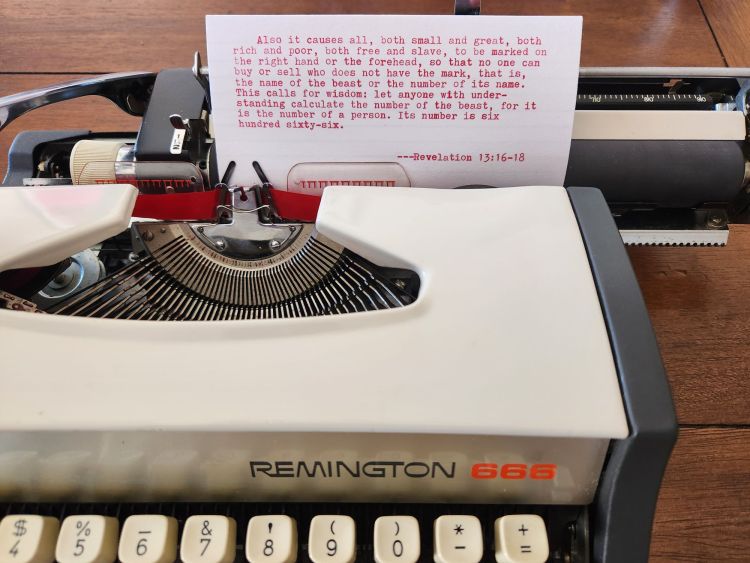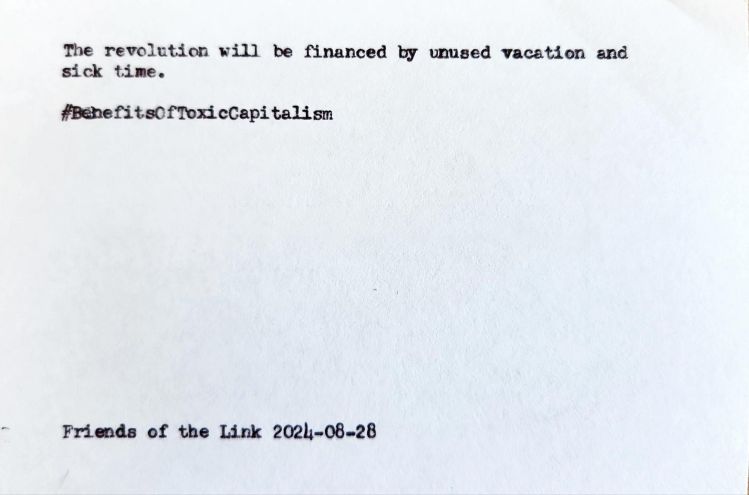
Chris Aldrich
@chrisaldrich@boffosocko.com
Chris Aldrich
@chrisaldrich@boffosocko.com
Revisiting to note that I’ve now done even better for some reasonable quality cards: $1.58 for a brick of 500 cards.
Chris Aldrich
@chrisaldrich@boffosocko.com
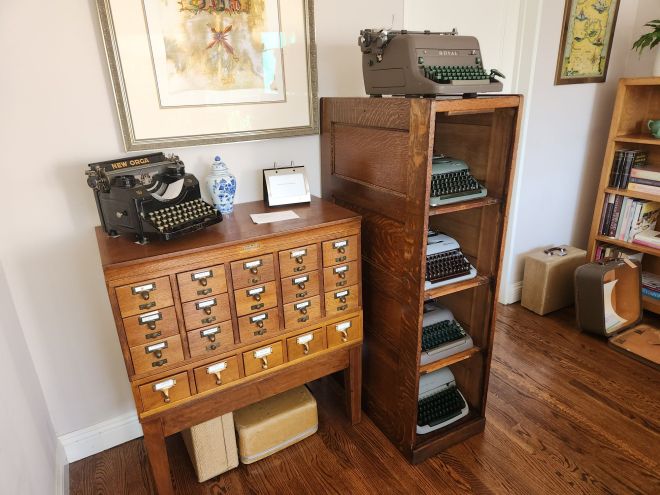
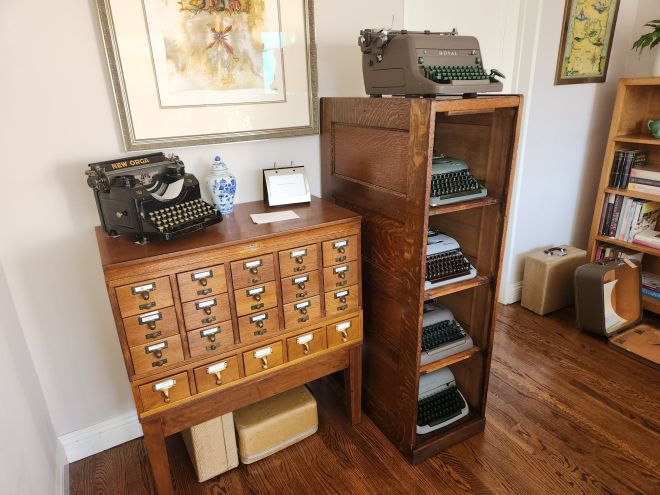
Chris Aldrich
@chrisaldrich@boffosocko.com
Chris Aldrich
@chrisaldrich@boffosocko.com
Chris Aldrich
@chrisaldrich@boffosocko.com
Today I used a Crayola Crayon as part of a typewriter restoration project. Anyone have guesses as to how I used it in a typewriter restoration capacity?
Chris Aldrich
@chrisaldrich@boffosocko.com
Chris Aldrich
@chrisaldrich@boffosocko.com

A revelation from the Remington 666.

Chris Aldrich
@chrisaldrich@boffosocko.com
Chris Aldrich
@chrisaldrich@boffosocko.com
Chris Aldrich
@chrisaldrich@boffosocko.com
Point-set topology is the branch of mathematics that deals with collections of points endowed with sufficient structure to make meaningful the notions of closeness, separation, and convergence. Beginning with familiar notions concerning open sets, closed sets, and convergence on the real number line and Euclidean plane, this course systematically develops the theory of arbitrary topological spaces. Topics include bases and subbases, separation axioms (Hausdorff, regular, and normal spaces), countability (first- and second-countable spaces), compactness and compactification, connectedness, and convergence (nets and filters). Instruction emphasizes examples and problem solving. The course appeals to those seeking a better understanding of the algebraic and geometric underpinnings of common mathematical constructs.
September 24 - December 3 on Tuesday 7:00PM - 10:00PM PT
Fee: $453.00
Location: UCLA, Math Sciences Building, Room 5127
As usual, there’s no recommended textbook (yet), and he generally provides his own excellent notes over a required textbook. I’d suspect that he’ll recommend an inexpensive Dover Publication text like those of Kahn, Baum, or Gamelin & Greene.
If you’re curious about what’s out there, I’ve already compiled a bibliography of the usual suspects in the space:
- Armstrong, M. A. Basic Topology. Undergraduate Texts in Mathematics, 3.0. Springer, 1983.
- Conover, Robert A. A First Course in Topology: An Introduction to Mathematical Thinking. Reprint. Dover Books on Mathematics. Mineola, N.Y: Dover Publications, Inc., 2014.
- Conway, John B. A Course in Point Set Topology. Undergraduate Texts in Mathematics. Springer, 2015.
- Crossley, Martin D. Essential Topology. Corrected printing. Springer Undergraduate Mathematics Series. 2005. Reprint, Springer, 2010.
- Gaal, Steven A. Point Set Topology. 1st ed. Pure & Applied Mathematics 16. Academic Press, 1964.
- Gamelin, Theodore W., and Robert Everist Greene. Introduction to Topology. 2nd ed. Dover Books on Mathematics. 1983. Reprint, Mineola, N.Y: Dover Publications, Inc., 1999.
- Kahn, Donald W. Topology: An Introduction to the Point-Set and Algebraic Areas. Dover Books on Mathematics. Mineola, N.Y: Dover Publications, Inc., 1995.
- Kasriel, Robert H. Undergraduate Topology. Dover Books on Mathematics. Mineola, N.Y: Dover Publications, Inc., 2009.
- López, Rafael. Point-Set Topology: A Working Textbook. 1st ed. Springer Undergraduate Mathematics Series. Springer, 2024.
- Mendelson, Bert. Introduction to Topology. 3rd ed. Dover Books on Mathematics. Dover Publications, Inc., 1990.
- Morris, Sidney A. Topology Without Tears, 2024. [.pdf]
- Munkres, James R., 1930-. Topology. 2nd ed. 1975. Reprint, Prentice-Hall, Inc., 1999.
- Shick, Paul L. Topology: Point-Set and Geometric. 1st ed. Wiley-Interscience, 2007.
- Sierpinski, Waclaw. General Topology. Translated by C. Cecilia Krieger. Repring. Dover Books on Mathematics. Mineola, N.Y: Dover Publications, Inc., 2020.
- Viru, O. Ya., O.A. Ivanov, N. Yu. Netsvetaev, and V.M. Kharlamov. Elementary Topology: Problem Textbook. American Mathematical Society, 2008.
- Waldmann, Stefan. Topology: An Introduction. Springer, 2014.
- Willard, Stephen. General Topology. Dover Books on Mathematics. Mineola, N.Y: Dover Publications, Inc., 2004.
AI generated featured photo courtesy of Glif Alpha
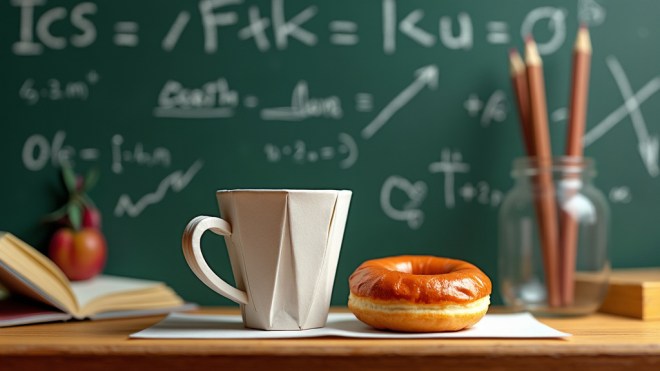
Chris Aldrich
@chrisaldrich@boffosocko.com
Chris Aldrich
@chrisaldrich@boffosocko.com
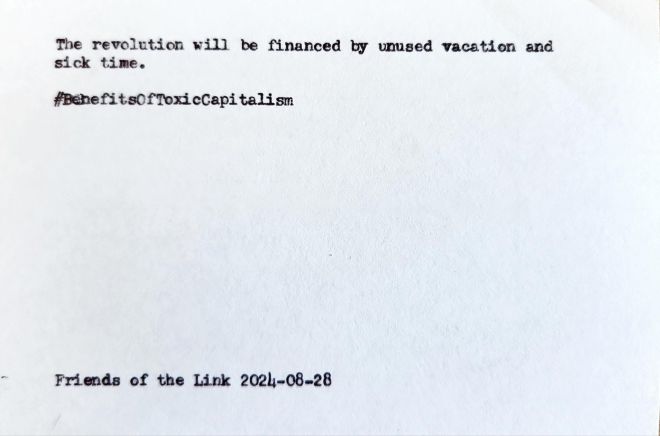

Chris Aldrich
@chrisaldrich@boffosocko.com
Chris Aldrich
@chrisaldrich@boffosocko.com
- Learning about typewriters for a future purchase?
- Contemplating buying your first machine?
- Visiting a local typewriter shop?
- Trolling Ebay, Facebook Marketplace, ShopGoodwill, CraigsList, OfferUp for your next machine?
- Buying new ribbon?
- Reading books about typewriters and their history?
- Reading typewritten literature?
- Are you out hunting for a new machine at yard/tag/garage sales or antique vintage shops?
- Exploring a new typewriter for the first time?
- Logging your machines into the typewriter database?
- Cleaning, repairing, or restoring a machine?
- Reading up on typewriter repair?
- Writing something for fun?
- Typing a post for the typosphere or One Typed Page?
- Visiting a typewriter museum?
- Watching videos about typewriters on YouTube?
- Something else?
Let us know what you’re doing in the comments…
Chris Aldrich
@chrisaldrich@boffosocko.com
Chris Aldrich
@chrisaldrich@boffosocko.com
Since April 3rd I’ve been acquiring a new typewriter on average every six days. 🙈 I think after the last three I just picked up, including a Remington 666 and Ten Forty I’ve been hunting for, I’m taking a hiatus unless I see a local Olympia SG1. 🤞🏼
Chris Aldrich
@chrisaldrich@boffosocko.com
More progress on the 1931 New Orga (Privat 5): he types! I found some compatible spools and ribbon. Given the Orga typewriter from the movie, I thought this Willy Wonka quote was apropos both as the first type sample and as encouragement for the remainder of the restoration mountain ahead.
Chris Aldrich
@chrisaldrich@boffosocko.com
Chris Aldrich
@chrisaldrich@boffosocko.com
Chris Aldrich
@chrisaldrich@boffosocko.com
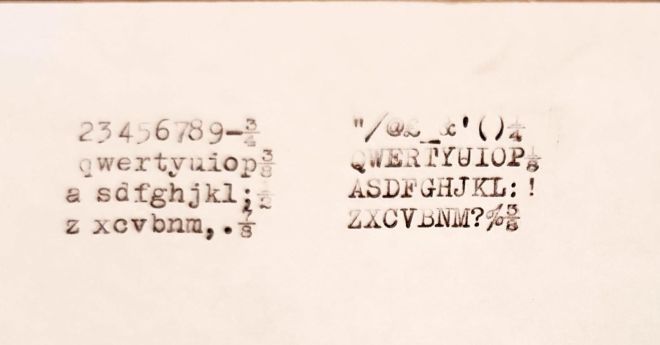
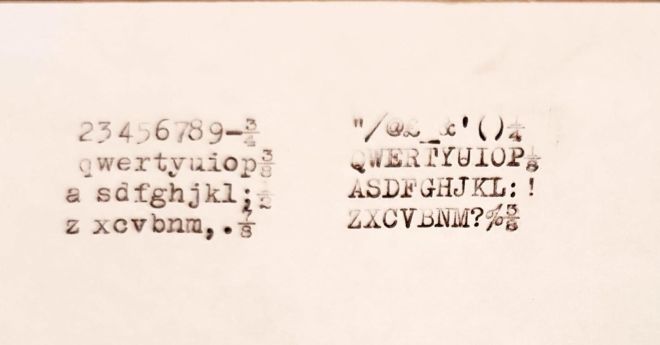
Chris Aldrich
@chrisaldrich@boffosocko.com
Chris Aldrich
@chrisaldrich@boffosocko.com
My New Orga (S/N: 149251) typewriter manufactured by Bing Werke A.G. in Nuremberg, Germany (Bavaria) sometime between 1928 and 1933 arrived today.
It was originally manufactured in Germany and distributed by “New Orga” the “Sole Concessionaires, The Durable Supply Coy” which the label indicates was at 45 Bedford Row, London WC1 at the time. Coy here is obviously the U.K. abbreviation for Company. The Typewriter Database states that The Orga was called “‘A.M.C.‘ for the British market and ‘Nagri’ for the Indian market.” My model may pre-date that convention, but I’ll have to do some additional research to see when the British market began distribution. After flipping through all of the Orga exemplars at the Typewriter Database, I can report that mine is the only version with the “New Orga” badging in English. All the other ones listed there are badged either as “Orga” or “Orga Privat”.
Based on the Typewriter Database details and serial number as well as photos of other models, I’m going to guess that my model is a Privat 5. Certainly it doesn’t predate the 4 which changed the location of the bell on the rear of the machine to where mine is. I’ll add it to the database as the 7th documented Privat 5 where it will be the 4th oldest listed in that line. Based on a purely linear distribution of the serial numbers from those years, I’d guess my model was likely manufactured around February of 1931.
Orga made an early standard typewriter before switching to their “Privat” line. While the connotation of the model name is “private”, it really translates more like “personal machine” (versus a business machine). While most of the Privat models seem to come with wooden bases and metal case tops, they’re really at a point in typewriter history that predates the idea of a truly portable machine. This one clocks in at 22.7 pounds, so it’s lighter than most of the bigger standards that tipped the scales at 30+ pounds, but it’s also a tad heavier than some of the later 1940s and 1950s portable machines. One source indicated that Bing Werke specialized in toy manufacture prior to starting into typewriters in 1922, and their thinner metal panels from the toy division were used in their typewriters to help make them less expensive so that they could compete in the space better. In any case, I’m expecting that this one will live in one place and not move around a lot once I’ve cleaned it up.
ConditionAt almost a 100 years old this typewriter is in surprisingly good condition. I’ve seen all the variations on the TypewriterDatabase.com, so I know I’m missing an original “case”, one of the ribbon spool covers, both original metal spools, and the spool nuts which held the spools down. Except for some heavy wear to the black paint on the front by the space bar, the paint and the decals are in exception condition for their age. I’m expecting that after a solid cleaning and polishing this model should really shine.
The platen is pockmarked with lots of typing and particularly periods as if someone typed periods for years on it. The rollers are cracking and have flat spots from sitting tensioned for decades. The bell creates a clarion song of it’s own, but is likely going to need some work or a spring to bring it back to life. It feels disingenuous to call any of the metal on this machine “brights”, but I’m guessing that after degreasing and polishing, they’ll light up once more. There’s some fun green corrosion going on at the edges of the platen knobs that may take some work to clear up properly.
The typeface is as grimy as I’ve ever seen. In general the internals are going to require a serious deep clean and degreasing, but there are really only about 6 sticky keys. I will say that the general typing mechanism makes one of the most satisfying and resonant clacks I’ve ever experienced.
The keyboard is in generally good shape for it’s age. The key legends are in a lovely shade of vintage yellow with a handful of legends being a darker yellow color than others. I doubt the metal keyrings were ever cleaned or polished in their lives, so they have some serious patina.
CuriositiesMany of the standard functionalities on the carriage are mirror reversed with respect to more modern US-based typewriters. The return handle, variable spacing mechanism are all on the right hand side and the manual margin release lever and the paper tray lever are on the left. (I’m going to have to do some sleuthing to figure out the proper use of the return mechanism which doesn’t seem straightforward to me.)
The New Orga has a shift lock, but in this case it’s so early that it’s effectuated by a metal switch on left side of keyboard rather than a key as became standard later on. This makes switching between lower case and upper case far more difficult for the touch typer.
This Orga is a carriage shift to be sure. I find it fascinating that there are highly visible and adjustable screws on both sides of the carriage right next to the platen knobs for controlling how high up and down the carriage can be shifted.
The machine has small knurled knobs on both sides which allow one to push from side to side to switch between the two ribbon spools. Additionally twisting these knobs causes ribbon to be picked up from one side to the other and vice versa after actuating the ribbon switch.
The keyboard is a QWERTY layout and has a pound symbol rather than a dollar sign symbol, backing up the fact that it was intended for the British market. It has a variety of fractions including 1/8, 3/8, 5/8, and 7/8 as well as the traditional 1/4 and 1/2, but on this machine the ! shares the slug with the 1/2.
The machine isn’t so old that the metal typing line doesn’t include two small ‘v’ cutouts for drawing straight lines across the page.
NamingI’m torn by what name to give this particular machine. I’m tempted to name it Wonka after the movie appearance of it’s younger brother the Privat Modell 10. The alternate is to call it Roger, a proper British sounding name, after the Englishman Roger Bacon who wrote the book Novum Organum (1620) which is often translated as The New Organon, a name I can’t help but think of every time I see the New Orga badge on the paper table of this machine.
Perhaps if I can’t get it up and running properly, I’ll use it as a boat anchor and call it the Wonkatania?
Thoughts?
I’ll continue to post photos and updates on this typewriter as I begin some of the cleaning and restoration process. If you’ve got access to a parts machine from this era, do let me know.
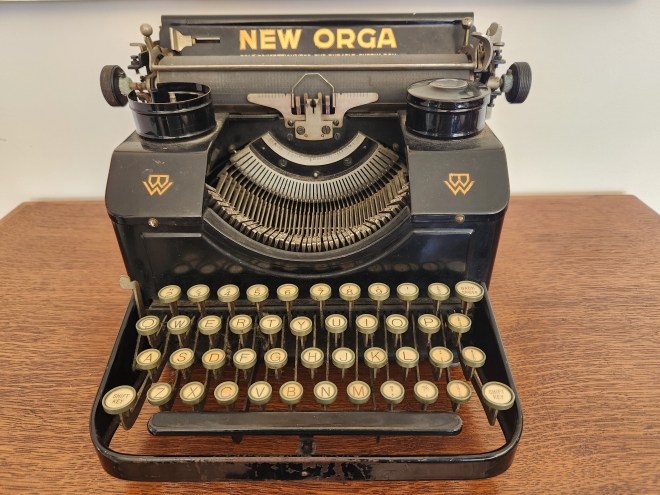
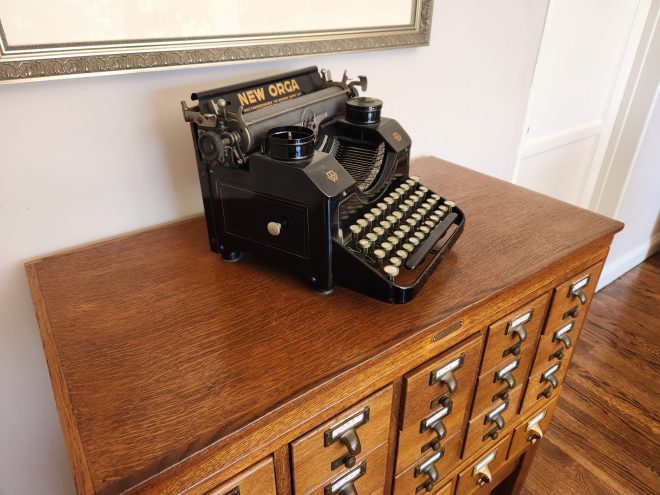
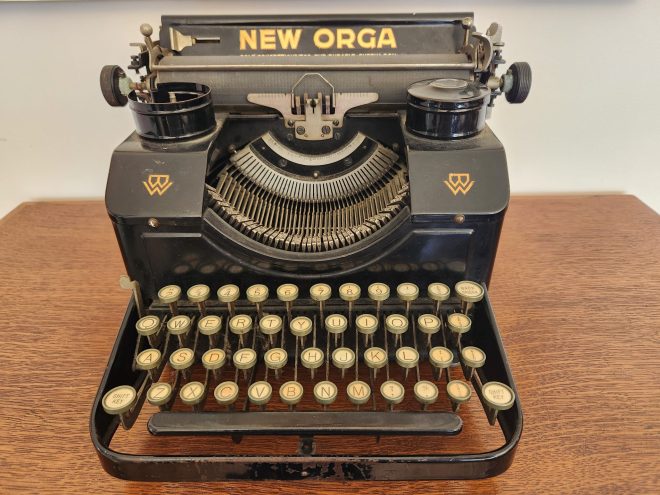
Chris Aldrich
@chrisaldrich@boffosocko.com
I sometimes use one of the four typewriters behind my desk for logging. (Another benefit of using cards.) I put in a new card in the morning and add/cross out as I go throughout the day. I often use one of the other typewriters to write out slightly longer mini-diary entries about particular things as I go. This helps me get away from computer screens, even if it’s only for short breaks throughout the day.
Happy to answer any questions people have about the practice. (Prior AMA here.)
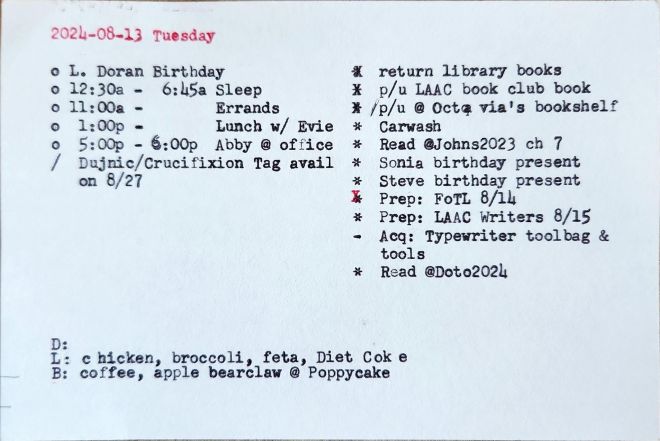

Chris Aldrich
@chrisaldrich@boffosocko.com
I discovered a few weeks ago that Crawford Tool has a few convenient and relatively inexpensive typewriter-related tools in their offerings which otherwise primarily cater toward the printer and electronic service repair spaces. In particular, they offer a variety of spring hooks, e-ring & c-clip tools, a nylon bristle brush, Lube-All oilers in a variety of sizes, and even some black canvas tool pouches to hold your screwdrivers. Naturally they’ve got screwdrivers and wrenches galore, but I think my current set is more than adequate. I made an order that showed up on Friday, just in time for some work on the weekend.
The Lube-All oilers will be excellent for dispensing both lacquer thinner and mineral spirits as well as minute quantities of oil in a far more precise fashion and with less potential splatter than my impromptu plastic condiment bottle. They also have cap closures so that volatile liquids are less likely to evaporate.
The spring hooks will be a dramatic improvement on my bent paper clip. The set I got includes a captive-style spring hook, an IBM-style spring hook (push/pull), an 11 inch long puller, a 6 1/2 inch long spring hook puller, and a 6 1/2 inch spring puller with a handle loop.
The black canvas pouches (a steal at their $2 closeout pricing) are better than wrapping everything up in an extra cotton wiping cloth.
If you’re expanding beyond your everyday tool-set and want to go beyond what’s available at the local dollar store, the handful of harder-to-find offerings at Crawford seem pretty solid.
Now its time to start saving up for the bar benders, the keyring pliers, and maybe a nice leather vintage bag to carry it all in.
Now I’ve got some better tools to use with my home study materials:
- Athey, Ralph S. Typewriter Repair Training Course. Tarentum, PA: Typewriter Repair Training, 1957. https://site.xavier.edu/polt/typewriters/AtheyTypewriterRepair.pdf.
- Scadden, David T. Approved Home Study Course in Typewriter Repair and Service. Little Falls, NJ: Typewriter Repair School, 1959. https://site.xavier.edu/polt/typewriters/homestudycourse.pdf.

Chris Aldrich
@chrisaldrich@boffosocko.com
Chris Aldrich
@chrisaldrich@boffosocko.com
Good call.
Chris Aldrich
@chrisaldrich@boffosocko.com
From Theodore Munk’s post 1954 Smith-Corona (SCM) Typewriter Type Styles and Keyboards Catalog in which he reproduces a copy of the 1954 catalog Type Styles and Keyboards for Smith-Corona Office Typewriters (Syracuse, NY: Smith-Corona, Inc.), they were offering a a keyboard Danish No. 1047 which came in either Pica No. 1 or Elite No. 66. (page 72).
My keyboard (1949) differs only slightly in layout from the one pictured there (1954), but the typeface appears to be the same Elite No. 66.
Chris Aldrich
@chrisaldrich@boffosocko.com
Tried both M4 and M3 screws today and it’s even smaller than those. We’ll have to go to McMaster-Carr now I think. Anyone know what the standard small screw in the Brother machines is?
Chris Aldrich
@chrisaldrich@boffosocko.com
I finished!
Chris Aldrich
@chrisaldrich@boffosocko.com
We really take for granted how so many things work now, so it’s interesting to look back on the set up of business principles and mechanics of things. Perhaps I’ll have more on this later, though it’ll take some interaction with other ideas to make them apparent. For now, you might appreciate Richard’s recent piece which reminded me to revisit it and my notes from late last year: https://writingslowly.com/2024/03/13/the-card-index.html
Chris Aldrich
@chrisaldrich@boffosocko.com
Someone asked about how the cabinet sounds, so here’s a sample of a drawer being opened and then closed:
Listen to the 8 drawer Steelcase card index:Download audio
Chris Aldrich
@chrisaldrich@boffosocko.com
Thanks for the reminder Phil. I think I first came across that piece of Baker’s while researching the size of notes/ideas/thoughts in August 2021 and looked at it right after some of Beatrice Webb’s work. Luhmann’s slips show some of this sort of wear as well, though his show it to extreme as he used thinner paper than the standard index card so some of his slips have incredibly worn/ripped/torn tops more than any grime. Many of my own books show that grime layer on the fore-edge in sections which I’ve read and re-read.
One of my favorite examples of this sort of wear through use occurs in early manuscripts (usually only religious ones) where readers literally kissed off portions of illuminations when venerating the images in their books. Later illuminators included osculation targets to help prevent these problems. (Cross reference: https://www.researchgate.net/publication/370119878_Touching_Parchment_How_Medieval_Users_Rubbed_Handled_and_Kissed_Their_Manuscripts_Volume_1_Officials_and_Their_Books)
Chris Aldrich
@chrisaldrich@boffosocko.com
I could have sworn that FireKing had some safes on their site, but those are far more common in a huge variety of shapes and sizes.
